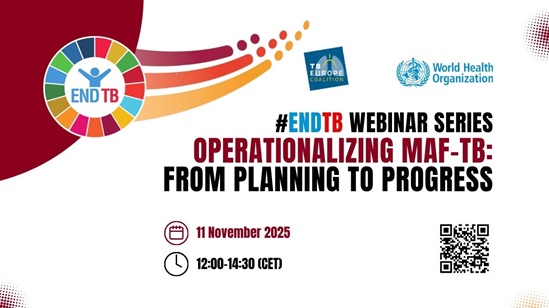SSM Health St. Mary’s makes sure babies sleep safe and sound – American Hospital Association

Report on SSM Health’s Initiative to Combat Infant Mortality in Missouri
Introduction: Addressing a Critical Health Challenge
SSM Health hospitals in Missouri are implementing a comprehensive Infant Safe Sleep Program to address the state’s high infant mortality rates. This initiative directly supports the achievement of key United Nations Sustainable Development Goals (SDGs), particularly those related to health, equality, and partnerships. The program focuses on preventing sudden unexpected infant death (SUID) through parental education and resource provision, aligning with global health and well-being targets.
Program Strategy and Implementation
The Infant Safe Sleep Program is a multi-faceted strategy executed in collaboration with the National Safe Sleep Hospital Certification Program and Cribs for Kids. Its core components are designed to create a sustainable culture of safety for newborns.
- Parental Education: Perinatal educators engage with every new family to provide critical instruction on safe sleep practices before hospital discharge.
- Resource Provision: Families are equipped with essential tools to facilitate safe sleep environments, including swaddle sacks, fitted crib sheets, and informational materials.
- Institutional Reinforcement: Hospital staff reinforce the safe sleep message by wearing informational badges, ensuring consistent and visible reminders of best practices.
Alignment with Sustainable Development Goals (SDGs)
The program’s framework and objectives demonstrate a strong commitment to the global SDG agenda.
- SDG 3: Good Health and Well-being: The initiative’s primary goal is to reduce infant mortality, directly contributing to Target 3.2, which aims to end preventable deaths of newborns and children under five years of age. By educating parents on practices that prevent SUID and SIDS, SSM Health is taking decisive action to improve child survival rates and promote lifelong health from the very beginning.
- SDG 10: Reduced Inequalities: By providing education and resources to every family, regardless of socioeconomic status, the program works to mitigate health disparities. This universal approach ensures that all infants have a safer start in life, directly supporting Target 10.3 to ensure equal opportunity and reduce inequalities of outcome.
- SDG 17: Partnerships for the Goals: The program exemplifies the spirit of SDG 17, which promotes collaboration to achieve sustainable development. The partnership between SSM Health, a major health care provider, and Cribs for Kids, a specialized non-profit, demonstrates an effective multi-stakeholder model for achieving critical public health objectives.
Conclusion
The SSM Health Infant Safe Sleep Program serves as a vital local intervention with significant global relevance. It not only addresses the urgent issue of infant mortality in Missouri but also provides a replicable model for how health care institutions can contribute meaningfully to the Sustainable Development Goals, fostering healthier communities and promoting greater equity in public health outcomes.
1. Which SDGs are addressed or connected to the issues highlighted in the article?
SDG 3: Good Health and Well-being
- The article’s central theme is a health care initiative by SSM Health Hospitals to combat high infant mortality rates in Missouri. This directly relates to ensuring healthy lives and promoting well-being for all at all ages, which is the core mission of SDG 3. The “Infant Safe Sleep Program” is a specific health intervention aimed at improving infant survival.
SDG 17: Partnerships for the Goals
- The article mentions that the initiative is part of the “National Safe Sleep Hospital Certification Program in collaboration with Cribs for Kids.” This highlights a partnership between a health care provider (SSM Health) and other organizations to achieve a common goal, which is the essence of SDG 17.
2. What specific targets under those SDGs can be identified based on the article’s content?
Target 3.2: End preventable deaths of newborns and children under 5 years of age.
- The article explicitly states that the program’s purpose is to combat the state’s “high infant mortality rates” and prevent “sudden unexpected infant death.” This directly aligns with the goal of Target 3.2, which aims to reduce under-5 and neonatal mortality. The program’s focus on new parents and babies is a direct action towards achieving this target.
Target 17.17: Encourage and promote effective public, public-private and civil society partnerships.
- The collaboration between SSM Health Hospitals, the National Safe Sleep Hospital Certification Program, and Cribs for Kids is a clear example of a civil society and private sector partnership. As described in the article, these organizations work together to educate parents and provide resources, demonstrating the kind of effective partnership that Target 17.17 seeks to promote.
3. Are there any indicators mentioned or implied in the article that can be used to measure progress towards the identified targets?
Indicator for Target 3.2: Infant mortality rates.
- The article explicitly mentions “infant mortality rates” as the problem the program is “working to lower.” This is a direct and measurable indicator (related to official indicator 3.2.1 Under-5 mortality rate and 3.2.2 Neonatal mortality rate) that can be used to track the success of the initiative and progress towards Target 3.2.
Indicator for Target 17.17: Provision of resources and educational materials through partnership.
- While a specific quantitative indicator like a dollar amount is not mentioned, the article implies a qualitative indicator for the partnership’s effectiveness. The article states that through this collaboration, “Parents receive swaddle sacks, fitted crib sheets and educational materials.” The delivery of these resources is a tangible outcome and an indicator of the partnership’s activity and commitment to the shared goal.
4. Table of SDGs, Targets, and Indicators
| SDGs | Targets | Indicators |
|---|---|---|
| SDG 3: Good Health and Well-being | 3.2: By 2030, end preventable deaths of newborns and children under 5 years of age. | The article explicitly refers to “infant mortality rates,” which the program aims to lower. This serves as a direct measure of progress. |
| SDG 17: Partnerships for the Goals | 17.17: Encourage and promote effective public, public-private and civil society partnerships. | The existence of the collaboration between SSM Health, the National Safe Sleep Hospital Certification Program, and Cribs for Kids. The provision of resources (“swaddle sacks, fitted crib sheets and educational materials”) acts as a tangible indicator of the partnership’s function. |
Source: aha.org

What is Your Reaction?
 Like
0
Like
0
 Dislike
0
Dislike
0
 Love
0
Love
0
 Funny
0
Funny
0
 Angry
0
Angry
0
 Sad
0
Sad
0
 Wow
0
Wow
0
























;Resize=805#)






















































